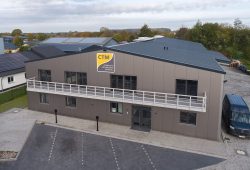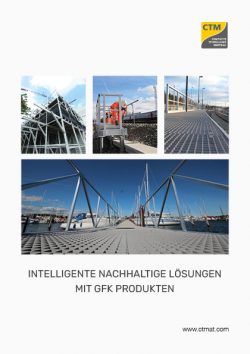Properties of CFRP Carbon

Carbon fiber materials (CFRP) are materials with outstanding properties: light, exceptionally stiff, of high strength, fatigue and corrosion resistant. However, due to the special material properties of the fiber, a few measures should be taken to preserve these advantages for as long as possible. Knowledge of the composition and structure of a carbon material allows prediction of the maximum load capacity values that can be achieved and the maintenance measures necessary to maintain them. Processed in a composite part, the fiber is only one of the main load-bearing components; the connection of the fibers and their relative positioning to each other are provided by the resin system used.
Especially for structurally load-bearing (stressed) applications, the use of epoxy as a resin system is still the best choice. As a result, excellent fiber wetting, high strength and load-bearing capacity are achieved with the lowest possible material usage. To maintain the benefits of a carbon composite over the long term, the following recommendations can be made:
- Avoid strong heating of the component. The dark surfaces of carbon in particular absorb a lot of energy from sunlight, for example, and develop a great deal of heat as a result. Controlled post-cured composite components that are exposed to high temperatures in the process also lose some of their fatigue strength when exposed to heat.
- Epoxy resins are not UV resistant. Prolonged intense exposure to UV rays attacks the molecular structure of the epoxy and alters its physical properties.
- Attacked epoxy has a ‘chalky’ character and has low fiber adhesion. Should it separate from the bond, the embedded fiber is exposed to the weather without
especially moisture can then penetrate the composite and further weaken the strength of the laminate. To avoid this possible process, coating or painting the carbon component is recommended. UV-resistant polyurethane coatings, which are also available as a clear material, are ideal for this purpose.
Carbon materials, like metals, have good electrical conductivity. Accordingly, they (especially masts!) should be provided with sufficient grounding if possible or necessary. - Another effect of the conductivity is the increased corrosion of directly connected metal objects on carbon, especially susceptible of course aluminum, which acts as an anode on carbon and thus corrodes strongly. For protection, insulation with a non-conductor is always recommended, i.e. the use of plastic seals, or plastic fittings. Some hard chairs also weather to a greater or lesser extent in direct contact with carbon, but the corrosion decreases significantly as the grade of the steel increases.
- A major advantage of fiber composites is the possible orientation of the fiber directions according to the expected force applications. Due to the high stiffness of the carbon fiber along the fiber direction, optimized components can be designed and manufactured with a minimum of material and the same stiffness (compared to other materials). However, the load-bearing capacity of the component axially offset from this fiber direction (by about 90°) cannot be achieved to the same extent. In order to be able to introduce a minimum
- In order to be able to introduce a minimum of mechanical shear forces, e.g. pipes, masts, etc. are manufactured with more wall thickness than comparable components, but they still do not reach the strength of e.g. aluminum.
So avoid the occurrence of abrupt or high loads due to transverse forces, such as the spinnaker pole hitting the forestay under load, or apply reinforcements to particularly vulnerable areas (sheathing made of steel, aluminum or double-layer carbon tubes) at an early stage.


